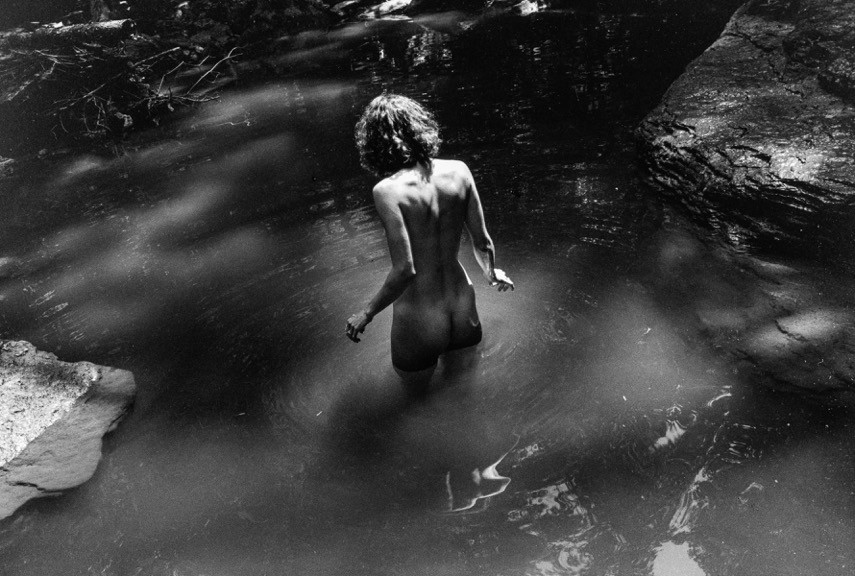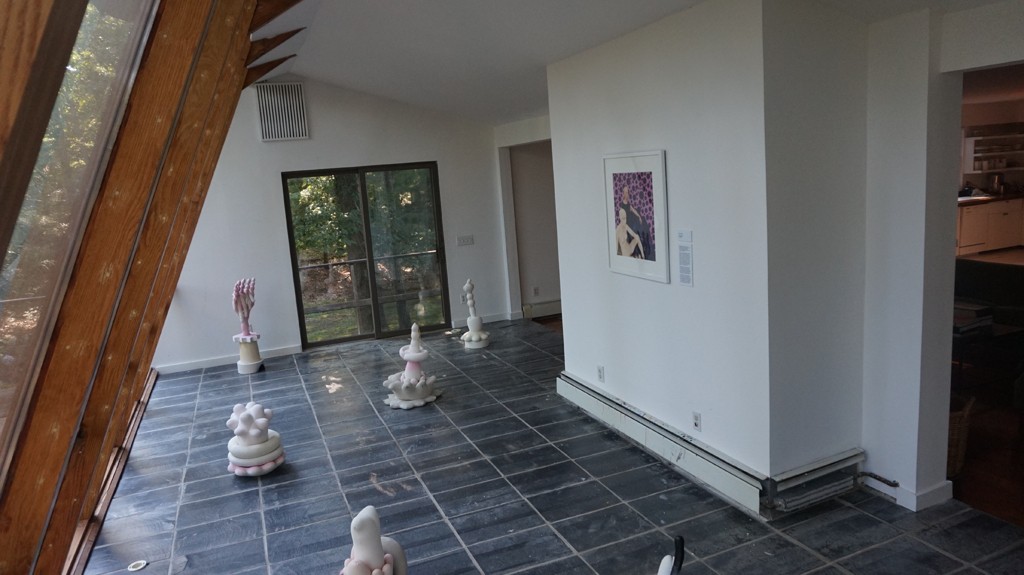This past summer, I had the opportunity to work with the curator Phillip March Jones, a dedicated and tireless ambassador for regional artists as well as Outsider Art, that genre of self-taught makers with limited contact with and access to commercial galleries and institutions. Over the past nine years, Jones has fostered a community of artists, writers, and musicians around Institute 193. The relationships formed have resulted in new bodies of work and collaborative projects that we were excited to exhibit at the Elaine de Kooning House.
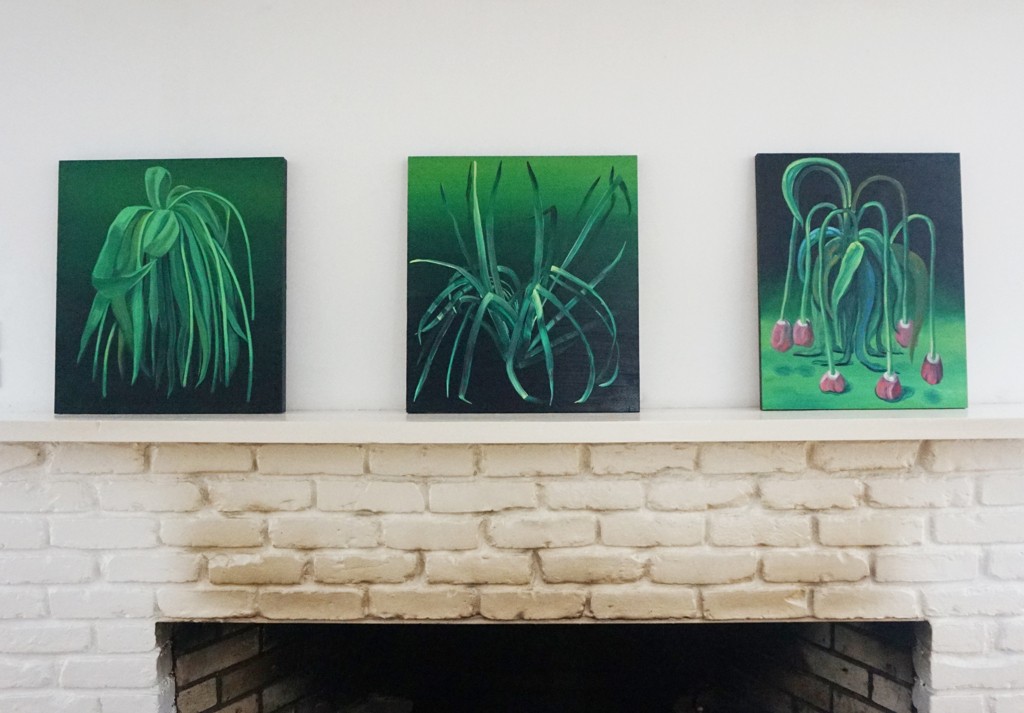
He and co-curator Maia Ferrari’s exhibition proposed both local and universal notions of community, demonstrating the effects that a space dedicated to the exchange of ideas can instill upon a group of individual talents. Their show entitled Summer Song: Institute 193 at the Elaine de Kooning House featured works by Robert Beatty, Jessie Dunhaoo, Mike Goodlett, Lonnie Holley, Shara Hughes, Guy Mendes, Adam O’Neal, Aaron Skolnick, Lina Tharsing, and Mare Vaccaro. A selection of Institute 193 publications was also on view.
Our collaboration was conceived of and tailored for the Elaine de Kooning House, the artist’s historic home and studio in East Hampton.
In 1975, when artist Elaine de Kooning was reconciling with her husband, Willem, she purchased a traditional saltbox house on Alewive Brook Road in East Hampton, N.Y. Elaine later added the studio where she created her final series of paintings, “Bacchus†and “Cave Walls”. During this time she also made portraits of her sister, Brazilian soccer player Pelé, and art dealer Aladar Marberger. Her work had been featured in the Museum of Modern Art’s “Young American Painters (1956-58).†She continued to make portraits during a formative period of American postwar art when, for the first time, the most radical new painting was happening in New York. Back then, the thought of an Abstract Expressionist concurrently adhering to a traditional genre was considered taboo by many tastemakers and the paintings themselves retrograde. Today, her studio practice seems prophetic: Many artists are able to create divergent bodies of work without the constraints of dogma or critical mandate.
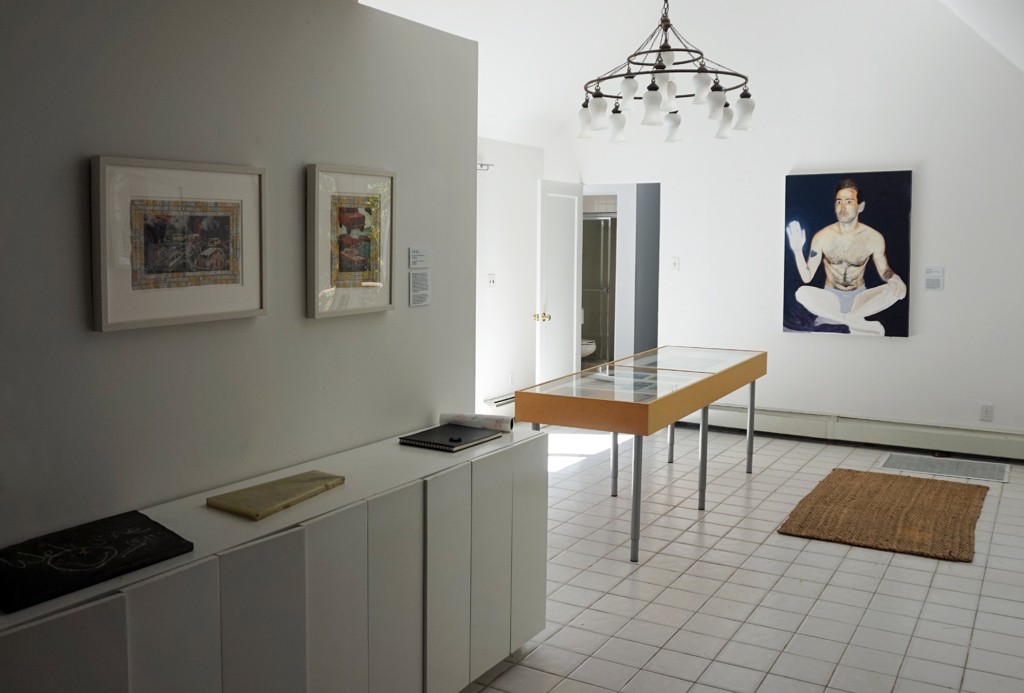
After de Kooning’s death in 1989, the sculptor John Chamberlain purchased the house, followed by painter Richmond Burton. Each artist made changes and modifications to its design. In order to capture the light at a specific time of day, Elaine would often work in the sunroom. Chamberlain used the ground floor studio as a darkroom and for archival purposes. The main studio has 18-foot ceilings with angled skylights, a private entrance and is connected to the house. When I bought the house and studio in 2010, it seemed animated with stories about renowned artists from previous generations. Elaine’s well-documented generosity toward other painters, curators and writers was legendary.
It was inspiring to be showing in a place where some of our greatest artists lived and worked. Thanks to Institute 193—specifically Phillip Jones and Maia Ferrari– we were written up in Hyperallergenic, and our work was posted on the Art News website. I’ve been exhibiting and publishing for 50 years, but I’ve never had a photograph reproduced by Art News before. Just as it has for nine years now, the Institute gets the word out. – Guy Mendes
Since 2011, the Elaine de Kooning House has hosted events, exhibitions, and informal artist residencies with the artists Charles Andresen, Aaron Aujla, Katherine Bernhardt, Lizzi Bougatsos, Joe Bradley, Jessie Dunahoo, Chris Duncan, Jonah Freeman and Justin Lowe, Mike Goodlett, Sedrick Huckaby, Kim “Mudman” Jones, Laura and Rachel Lancaster, Sadie Laska, Jose Lerma, Liz Markus, Adam Marnie, Scott and Tyson Reeder, John Riepenhoff, Celeste Dupy-Spencer, Jerry “The Marble Faun†Torre, Michael Williams, and Anke Weyer.
The painter and photographer Katherine McMahon has made the ground level space her permanent studio. Katherine is ARTnews’ Creative Director and her presence has allowed each of the visiting artists to feel at home and become acclimated to their new environment quickly. (I’ve also had the pleasure of seeing her own work develop and projects come to fruition.) While the residence still functions as a private home, its main purpose, both now and in the future, is to nurture artists and the groups that support them.
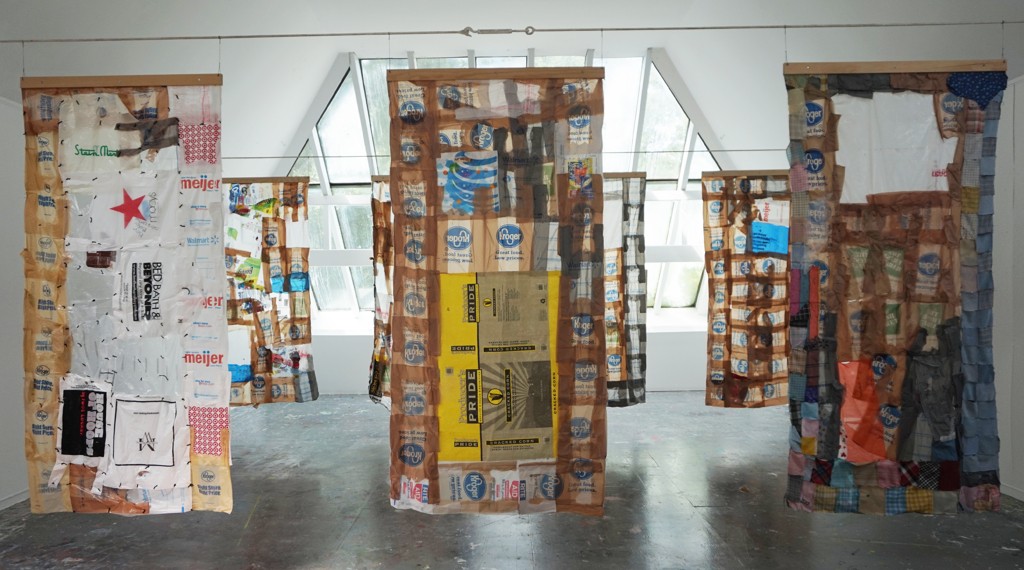
Our hope was to foster this spirit by making the space available to Institute 193’s artists, all while preserving the original structure and its history. Summer Studio has served as a resource for many of the activities at the house. We were happy to host a benefit for the Museum of Contemporary Art Detroit as well as the launch of Art21’s new streaming experience Art21.live.
In July, the Beach Painting Club (co-founded by Scott and Tyson Reeder) painted together on Sammy’s Beach, located just down the road from the Elaine de Kooning House. This annual event gathers artists and friends to paint together, followed by a cocktail reception and display of the resulting work at the house. Our guests have included the art historian Gail Levin, Jess Fuller, foundation director Helen Harrison, the collectors Anne and John Mullen, and painters Laura Owens, Chuck Webster and Joe Bradley.
As Institute 193 collaborates with artists, musicians, and writers to produce exhibitions, publications, and projects that document the cultural landscape of the modern South, our goal was to create and merge with a larger network. The installation became an opportunity for these artists to gain well-deserved broader media exposure, initiating connections across the globe. We look forward to continuing and fostering these relationships.
More about Phillip March Jones: A native of Lexington, Kentucky, Jones graduated from Emory University in Atlanta but also attended Auburn in Alabama and the Sorbonne in Paris (his French translating skills helped subsidize some early aesthetic endeavors). In 2009 he started Institute 193, a small project space near the University of Kentucky with the intention of exposing contemporary artists from the interior who were unknown on the coasts. Two years later he became the inaugural director of the Souls Grown Deep Foundation. Souls Grown Deep was a labor of love for collector Bill Arnett, who had a missionary zeal to preserve, document, display and promote the expressions of living self-taught African American artists in the Southeast and elevate them to the level of the blue chip insiders. He succeeded. Works from the foundation are now in the collections of the Metropolitan Museum of Art, the Guggenheim, and the Philadelphia Museum of Art. One of Jones’ most anticipated upcoming projects is his organizing of the Atlanta Biennial with Atlanta Contemporary Art Center curator Daniel Fuller.
About the author: Chris Byrne is the author of the graphic novel The Magician (Marquand Books, 2013). He is co-chair of ART21’s Contemporary Council and serves on the board of directors of Institute 193, Dallas Contemporary, and the Museum of Contemporary Art Detroit.

